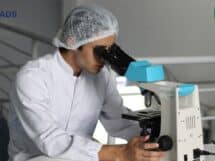After having served as a crime reporter for a decade, I wondered how I could be of any use to the sector of sanitation, health and hygiene!
It was by providence that I got involved into sanitation, hand washing and construction of toilets. After having served as a crime reporter for a decade, I wondered how I could be of any use to the sector of sanitation, health and hygiene! Also, where is the thrill in all this, I thought. But, that one meeting with my former boss and the moment he said, “You will be still covering crime, rather helping to reduce the rate, by just teaching people how to wash their hands”, changed everything.
I was aghast! In the year, 2015, hand-washing didn’t seem such a potent risk factor in the realm of good health. But then came 2020 – the year that introduced us to the perils of Covid and emphasized the importance of a regular Hand-washing practice.
Prior to the COVID-19 era, handwashing with soap, post toilet use was reported at just 19 per cent globally. The statistics will show a completely different picture now.
Back home, in Uttar Pradesh, Chief Minister Yogi Adityanath launched a hashtag campaign – #haathdhonarokecorona – on October 15, Global Handwashing Day.
According to the World Health Organization, hand-washing reduces the number of people who get sick with diarrhea by 23-40 per cent, curbs diarrheal illness in people with weakened immune systems by 58 per cent. Reduces respiratory illnesses, like colds, in the general population by 16-21 per cent and lowers absenteeism due to gastrointestinal illness in schoolchildren by 29-57 per cent.
My work in sanitation took me around the various districts in Uttar Pradesh, where our foremost duty was to install handwashing units in schools, sensitise and train children in the globally recognized six steps of handwashing and motivate them to take this information forward to their families. Children are considered to be the best carriers of information. What they learn in schools would be carried forward to their parents, kith and kin. This also led to the increased attendance in schools, wherein Principals would point out how children love the handwashing units and how they ensure washing hands before and after their mid-day meals. In some schools, the attendance of girls increased and they were seen coming from families that would traditionally never educate the fairer sex.
Our endeavor would be enjoying fruition when their parents would come to us sometimes telling us how they have learnt from their children about health and hygiene.
In Uttar Pradesh, despite the image of being an unruly state, divided through caste politics, my experience showed how dedicated, courageous and open to change the community is. How much they, especially women and children, are willing to invest to make a change, no matter how small. They are encouraged by each other and also by the Government and bureaucracy. They help and support each other to create a better tomorrow and are striving hard every day to achieve that future.
In 2019, three billion people lacked access to a handwashing facility with soap and water, including three quarters of those living in sub-Saharan Africa, according to WHO. Globally, one in three health care facilities do not have hand hygiene facilities at points of care. Covid has certainly changed this. Let’s hope that we don’t need another Covid to reduce risk factors to good health, because, always and forever, prevention is better than cure.


















Add Comment